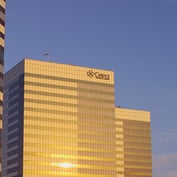Despite Brazil’s problems, some experts say its risk premiums are too high.
The former Western powerhouse of the BRICS, Brazil’s economy has stumbled from one of the fastest-growing emerging markets to a place where many investors fear to tread. Beset by rising inflation and unemployment and shrinking manufacturing, consumers have slowed spending, putting the brakes on the economy despite the government’s efforts to help.
One thing that certainly hasn’t helped is the spectacular failure of Eike Batista’s empire and fortune. The man who not so long ago was Brazil’s richest, boasting a $34.5 billion bank balance, is now on the verge of bankruptcy, and has been selling off assets and shedding business units even as his company OGX Petróleo e Gás Participações SA has lost millions for investors BlackRock and PIMCO by failing to produce its wildly optimistic predictions of oil reserves.
While the company said recently that it was reviewing all options to stay in business, hoping that its shareholders and bondholders will cut it some slack as it attempts to refocus, if it fails to survive, it could bring down sister company OSX Brasil SA, the shipbuilding firm that Batista also controls. He’s been dismantling his Grupo EBX conglomerate, but markets may do some of the work for him if he is unsuccessful in buying some extra time for the business to regroup.
That, coupled with a lower outlook on Brazil’s credit rating from Moody’s, has meant that investors have looked elsewhere for opportunity that isn’t so tied to risk, especially since Brazil’s political situation has been experiencing some hiccups as well.
Protests from indigenous peoples arose in June, and again this month, against proposed legal changes to their land rights supported by the farm lobby. Dilma Rousseff, the current president, has seen her popularity suffer as the economy has suffered, and could face a challenge from an unexpected quarter in next year’s election with the alliance of two of the country’s most popular opposition leaders.
Business-friendly Eduardo Campos, the governor of Brazil’s Pernambuco state, joined forces with Marina Silva, a former environment minister who had planned to challenge Rousseff for the presidency. Silva’s weak showing in polls apparently convinced her to ally with Campos, and the combination has been a shock to Brazil’s political establishment, creating a broad reach across the country that could appeal not just to disaffected businessmen but also environmentalists.
However, Rousseff herself seems to have recovered much of her standing since the June demonstrations and is popular with the poor, since her administration has focused on unemployment, still near record lows despite its rise, and the reduction of poverty. The country’s statistics bureau released figures in September indicating that inflation may be slowing at last. And there are some additional signs that change is coming.
According to Markit Economics, the HSBC Brazil Manufacturing PMI Report indicates September growth, the first in two months. Output also rose, for the first time in three months. In addition, job creation was slightly on the rise in the services sector, as private sector output expanded in September for the first time in three months. The financial intermediation and “other services” sectors led the way.








 October 17, 2013 at 09:04 PM
October 17, 2013 at 09:04 PM









